Workation » Italian Coffee Culture Guide
Coffee Culture in Italy
Coffee has its own culture in Italy, and with that culture comes its own rules. Coffee in each region mirrors the predominant heritage, personifying distinctive features of a city or region, therefore the names of Italy’s different types of coffee are an expression of flavor and a connection to one’s customs.
Coffee culture in Italy has flourished since the opening of the first coffee house in 17th-century Venice. It is much more than a beverage and has become a symbol of local hospitality and a daily ritual traditions have circled around. With an emphasis on quality and artisanal methods, espresso remains king and produces a full-bodied, strong flavor with smooth texture and natural semi-sweet character.
Find out what you need to know about drinking coffee and coffee culture in Italy so you can enjoy sipping your favorite drink according to local custom during your Italy Workation package.
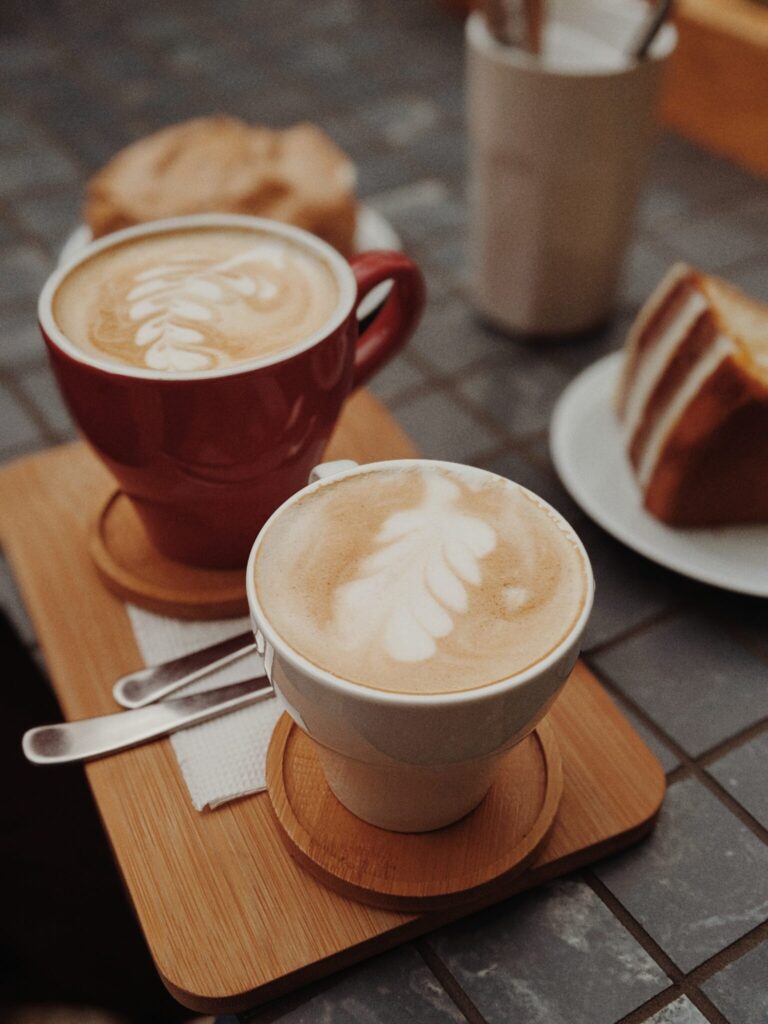

A Guide to Italian Coffee Culture
Each region of Italy boasts its own special flavors of coffee, adhering to the local palates shaped by the cuisine and cultural history over the centuries. It ensures Coffee in Italy has a local character, much like individual recipes affected by the ingredients available.
In the late 17th century Vienna exiled the occupying Ottomans with the help of the Venetian Republic. The retreating army abandoned approximately 500 bags of coffee, beginning the coffee-drinking tradition in Austro-Hungarian Empire and Italy, most notably Venice.
Best places to try coffee in Italy
Venice
Coffee in Venice continues in the traditions of its heritage with well-rounded aromatics of a Middle Eastern and Central Asian vanilla fragrance. Milan coffee is light, delicate, and fine, connoting the high-speed pragmatism of the industrial city. The fast-paced urbanites drink their espresso quickly before heading to the office.
The regions of Piedmont and Liguria produce sweet and delicate coffee shaped by the world wards, turning coffee into a small luxury in which to indulge. Neapolitans prefer their coffee intense and dark, with Neapolitan espresso becoming the worldwide embodiment of Italian coffee standards in style and quality.

Rome
Rome may not be the originator of Italy’s coffee culture but it has appropriated the importance of coffee in Italy as its own hosting the second-oldest coffee house in the country. Once serving the likes of Goethe, Keats, Twain, and even Casanova, the value of coffee has only grown as a social construct in Rome.
Coffee houses serve traditional espresso as well as cappuccinos, shakeratos and caffe con latte, joining the traditional with the avant-garde and removing the barriers between the aristocracy and working-class one cup at a time.
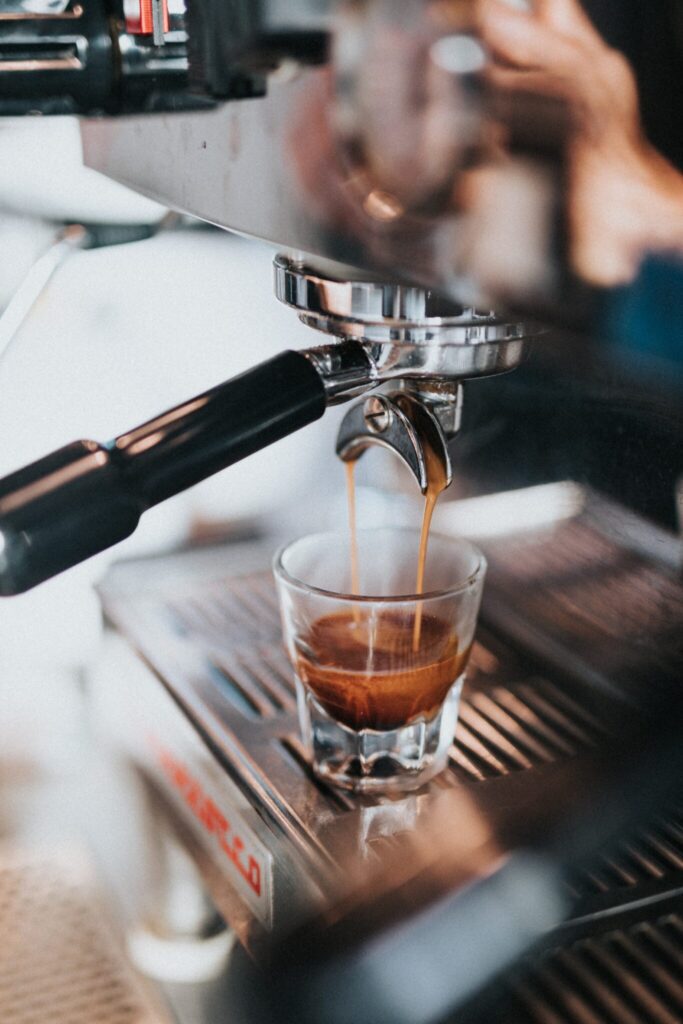
Turin
Turin’s coffee culture and history dates back to the 1600s when politicians, artists, and revolutionaries would meet in cafes and discuss their hard-won opinions. Famous Italian coffee brands have risen out of Turin, alongside notable chocolates, with definitive histories and quality intertwined with the growth of political and artistic unrest.
Because of coffee’s entangled history with the city, Turin is home to more cafes per capita than any other Italian city and represents the peak of coffee culture as the home of the genesis and evolution of Lavazza coffee.
Naples
Naples is a traditional city with working class customs demonstrated in the neighborhood cafes serving typical cups of espresso late into the night. A customary cup of caffe napoletano is less sweet, black, and served riotously hot.
The oldest coffee house in Naples was founded during the Unification of Italy in the mid-19th century but the tradition of buying an espresso for another who cannot afford one speaks to the greater community atmosphere of the chaotic coastal city. The rustic charms of traditional coffee houses don’t focus on the photographable drinks of the new era and instead offer distinctive textures and flavors with customary ingredients and flavors like espresso with steamed milk.
Regional Variations on Italian Coffee Drinks
Italians tend to order their drinks al banco, which means “at the bar,” preferring to stand with their colleagues and friends near the bar with their caffé in hand.
The name of coffee changes between cities as well, with the city of Trieste claiming the most creative terms for its most popular beverage. Locals refer to espresso as nero but order “Nero in B” if desiring an espresso in a small glass.
If you were to place a simple order at the bar while in Trieste, Turin, Milan, or Naples, like wanting an espresso, cappuccino, or macchiato, the bartender would understand even without the local terminology, unless you ask for just “coffee.”

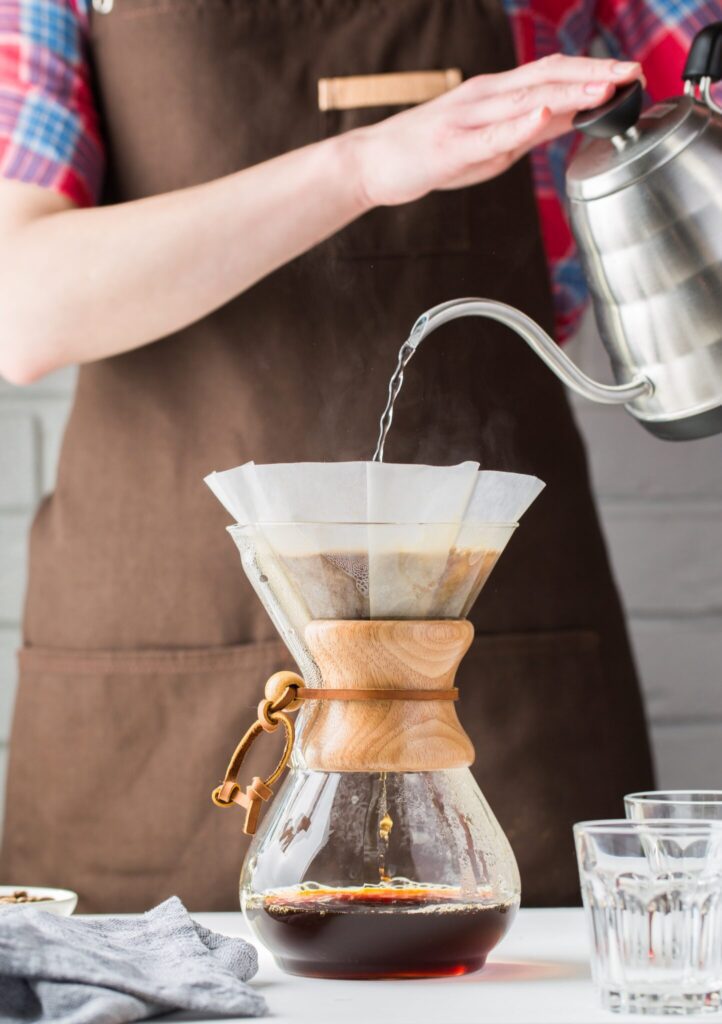
Popular Types of Italian Coffees
Coffee in Italy is as important a part of the culture as the food, nearly developing around the same time as dishes many recognize as typical Italian food. The importance of knowing about how to drink coffee in Italy comes with learning about the eight common types of coffee in Italy:
- Caffé – a shot of espresso
- Cappuccino – a cocktail of one-third espresso, one-third steamed milk, and one-third foam
- Macchiato – an espresso with a drop or two of hot milk. You can also order a Latte macchiato, which rotates the ratios of milk to espresso
- Marocchino – a shot of espresso with a layer of foam dusted with powdered cacao. It is milkier than a macchiato
- Caffé Latte – Latte in Italian means milk, therefore if wanting a latte traditional in the English speaking world, you must order a caffé latte, which is one-third espresso and two-thirds heated milk, topped with a light foam
- Shakerato – Espresso poured over ice and shaken until frothy, basically an Italian version of an iced coffee
- Caffé al Ginseng – Espresso brewed with ginseng extract to increase the nutty flavor with a natural sweetener
- Caffé d’Orzo – A roasted grain beverage made from ground barley and served like an espresso, however the coffee substitute is caffeine free and often considered an alternative for children or those looking for decaf. It is often enjoyed with the bright citrus of a fresh orange peel
When and How Often Do Italians Drink Coffee in Italy?
The time of day has a heavy influence on the type of drinks Italian will order. Espresso is acceptable at any time of day, but ordering a cappuccino or a caffé latte is considered unfashionable after 11am. Even though an Italian would never order the drink after lunch due to its milky properties, you are allowed to order one from a café or bar despite rumors about prejudiced bartenders or judging glances from other diners. Caffé al Ginseng is also considered a great digestive aid, with many Italians ordering the nutty and spiced drink after lunch or dinner.
Ordering a caffé doppio will get you a double shot of espresso. This type of drink is not common for Italians to order, however visiting the local barista multiple times a day for coffee breaks is normal behavior for most Italians. In the evening you can relax with a caffé corretto, an espresso served with a splash of alcohol, most often grappa or Sambuca.
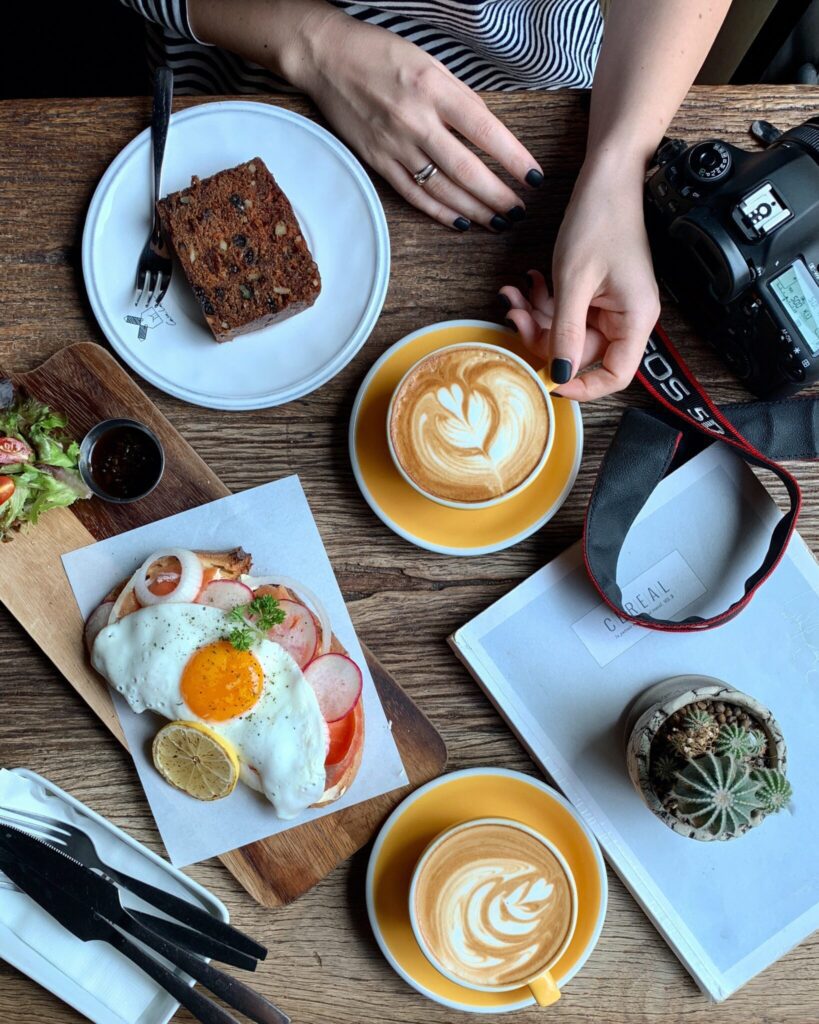
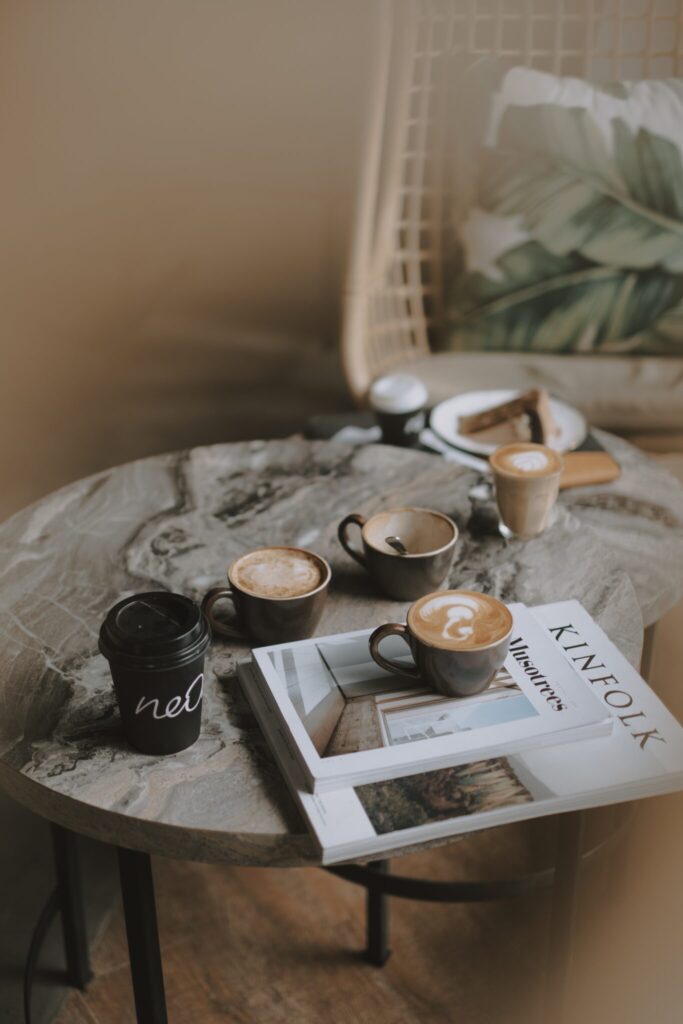
Final Tips and Coffee Etiquette
Important etiquette to know when referring to coffee in Italy can relate to ordering, drinking, or even where to find the coffee in the first place. Understanding the proper etiquette for enjoying your Italian coffee is not just about not offending locals but also helps guide your expectations. Keep in mind the following considerations during your Italy Workation to make sure you can enjoy your daily coffee ritual:
- The most important thing to remember when ordering a coffe in Italy is that a coffee house or cafe in Italy is usually called a bar. They often also have liquor available but are not the type of bar you may expect; instead, you can think of them as coffee bars
- Before you enjoy your coffee, remember that normally, you pay for your drink first at the register, then pick up your order at the counter.
- Latte refers to a glass of milk in Italy. If you want a coffee with milk, you need to refer to the drink as “caffe con latte” or “caffe latte.”
- Coffee when ordered at a bar typically comes in one size. You can always order another.
- There are generally two different prices for ordering a coffee, one when taken at the bar and another when taken at a table. The second price is usually inclusive of a service charge.
- Order and drink your coffee at the bar. No matter how hectic an Italian’s day, they normally take a few minutes to enjoy their morning coffee, even if just a little step towards a better work-life balance.
Find Your Right Coffee on Your Workation
Coffee is practically a national pastime in Italy, giving you plenty of opportunities to rest, reset, or meet with locals during the day. Enjoying an espresso in the afternoon or a foamy morning cappuccino can absorb you in the traditions of Italian coffee culture for a more memorable and enjoyable experience. From Turin to Venice, Rome to Naples, Florence to Sicily, the traditions of Italian coffee come with their own local rituals turning every cup into a distinctive experience.
Find the information you need and start planning your Italy Workation. Allow us to accelerate your productivity by focusing on how to best balance your work-life experience during an authentic immersion in Italy. Take one step closer to planning your Workation or discover more information about the Best Time to Visit Italy for Workation.
More articles on Italian food and drinks
- Foods Enjoyed by Locals in Northern Italy
- Discovering the Hidden Gems of Italian Cuisine During Your Workation
- Foods Enjoyed by Locals in Tuscany
- What to Eat and Where in Italy
- Foods Enjoyed by Locals in Rome
- Italian Coffee Culture Guide
- Popular Food Festivals in Italy
- Popular Italian Wines to Enjoy During Workation
- Foods Enjoyed by Locals in Venice

